Where are young voters spending their time in 2024?

The 2024 election cycle is underway. As November approaches, campaigns at all levels are working to reach a key demographic--young voters. While 18-34 year-olds turned out in record numbers in 2020 and are making up a greater share of the overall electorate, signs point to lower enthusiasm in 2024, making meeting young voters where they spend their time with authentic messaging even more critical.
In our latest InfluenceIQ survey, we asked 2,000 18-35 year-olds about their engagement with politics and about what types of content they're consuming online. Here's what we found:
Young voters are not hyper-engaged with politics (or political content).
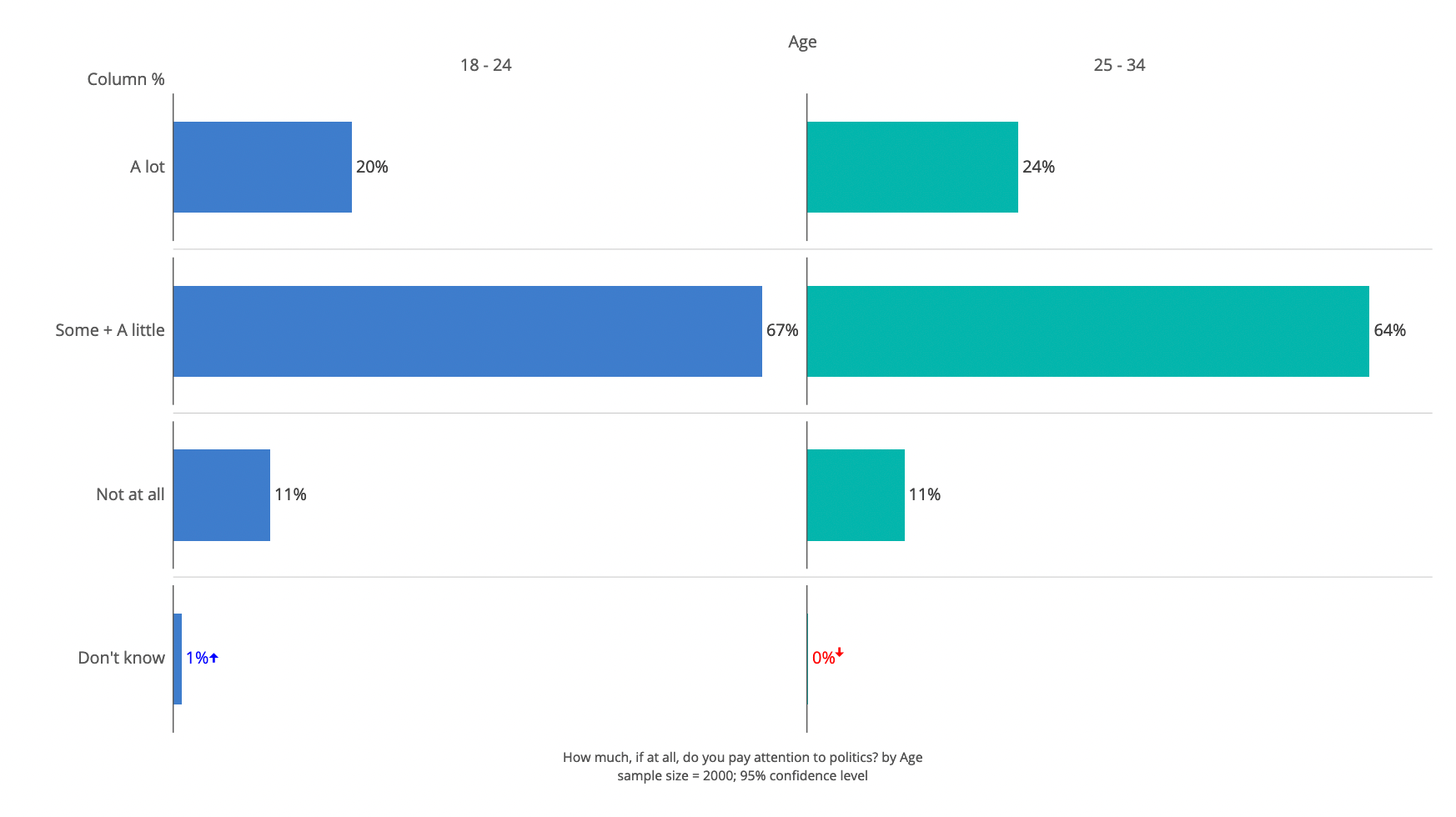
A majority of 18-35 year olds pay only "some" or "a little" attention to politics, while under a quarter report that they pay "a lot" of attention.
Angele Lansing and Sam Liebman discuss how relatability can help reach voters.
Not surprisingly, young Americans are not on the whole consuming much political content. Comedy and food top the list, while just over a quarter (28%) of 18-35 year olds report consuming political and news content from influencers.
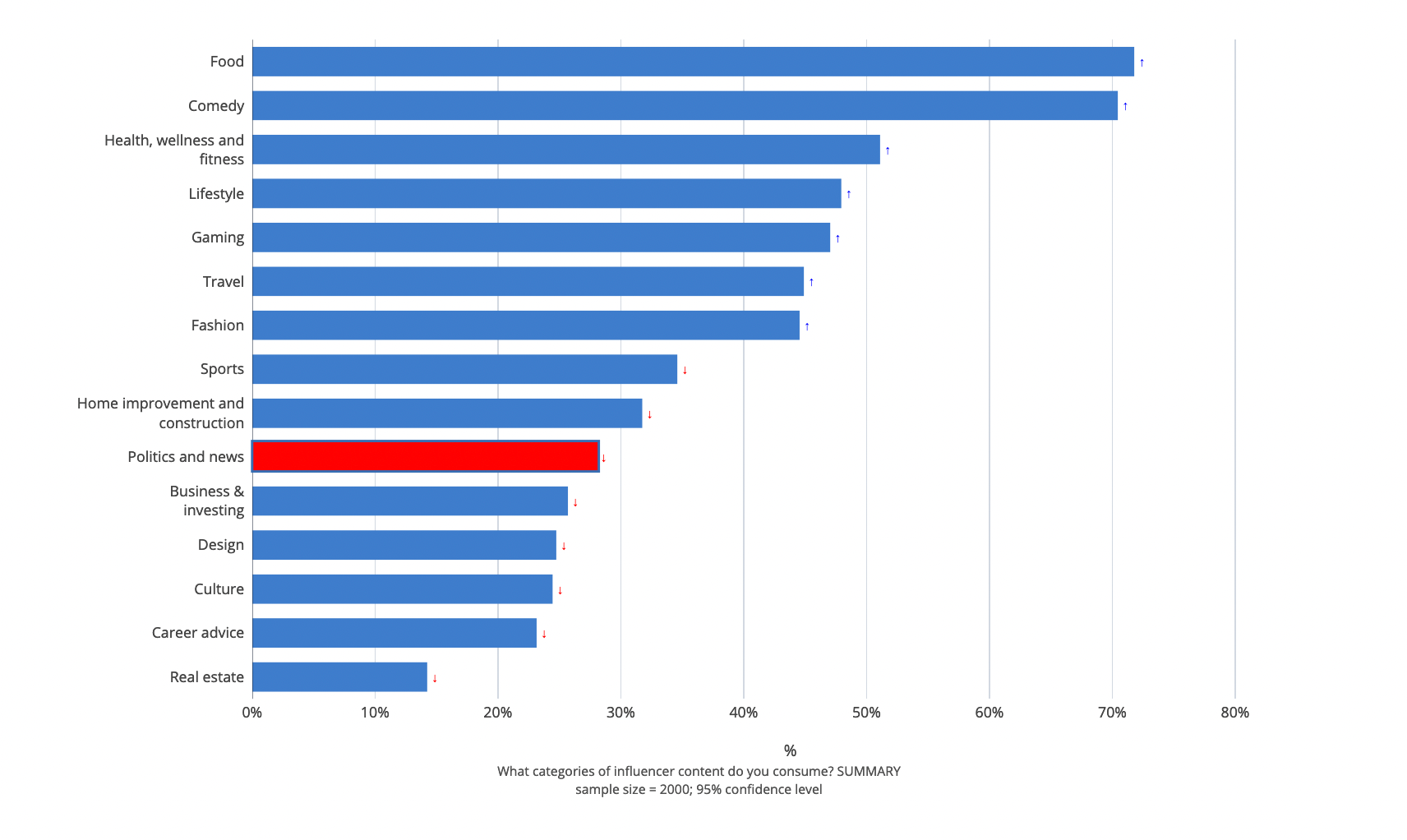
While food and comedy content dominates across party lines, there are subtle differences in the type of content consumed by those who identify as Republicans or Democrats. Most notably, Republicans are slightly more likely to consume content relating to home improvement and construction, while Democrats are more likely to consume fashion, travel, culture and lifestyle content.
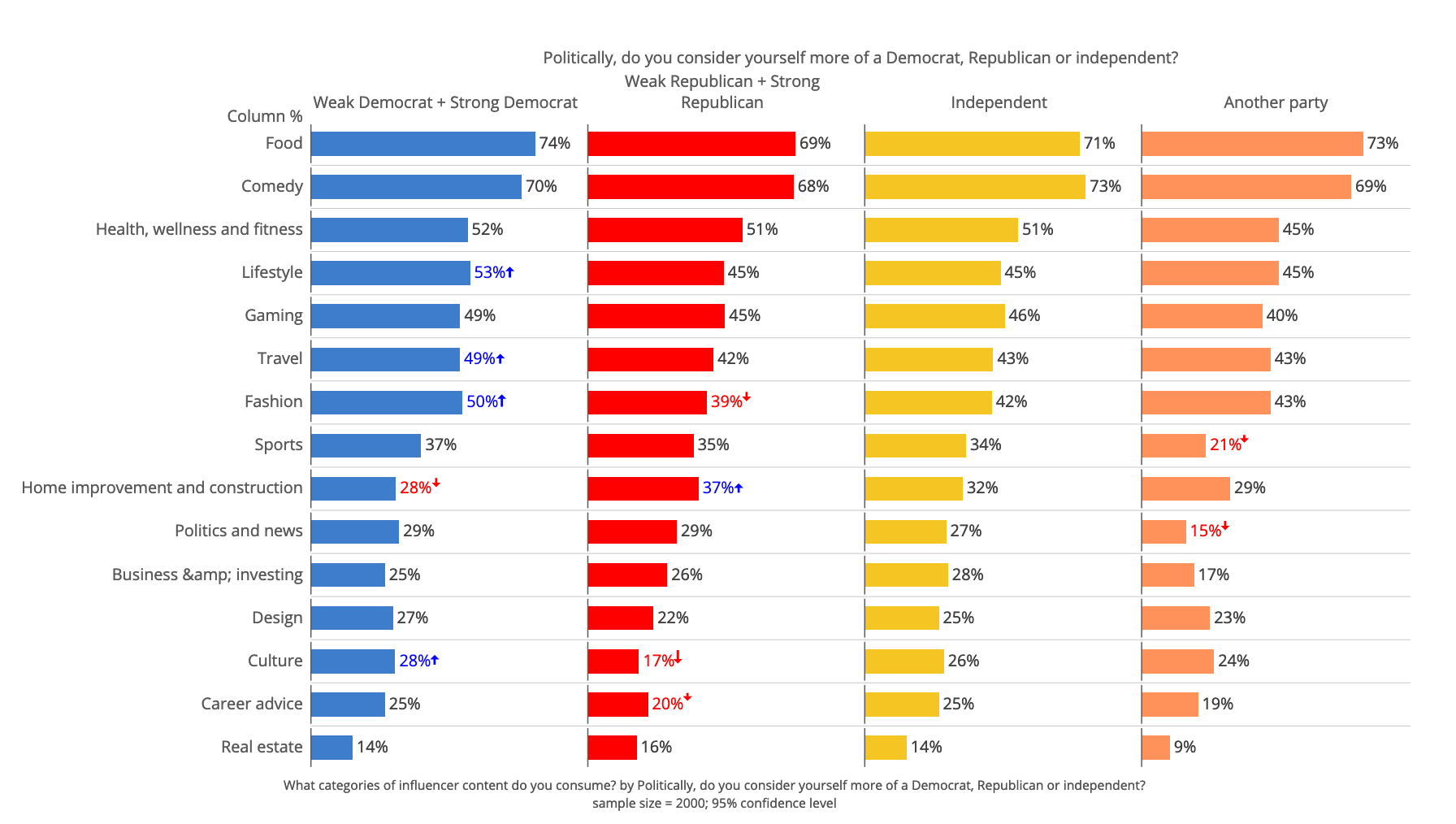
Where Americans, particularly young Americans, get their political news continues to be fragmented.
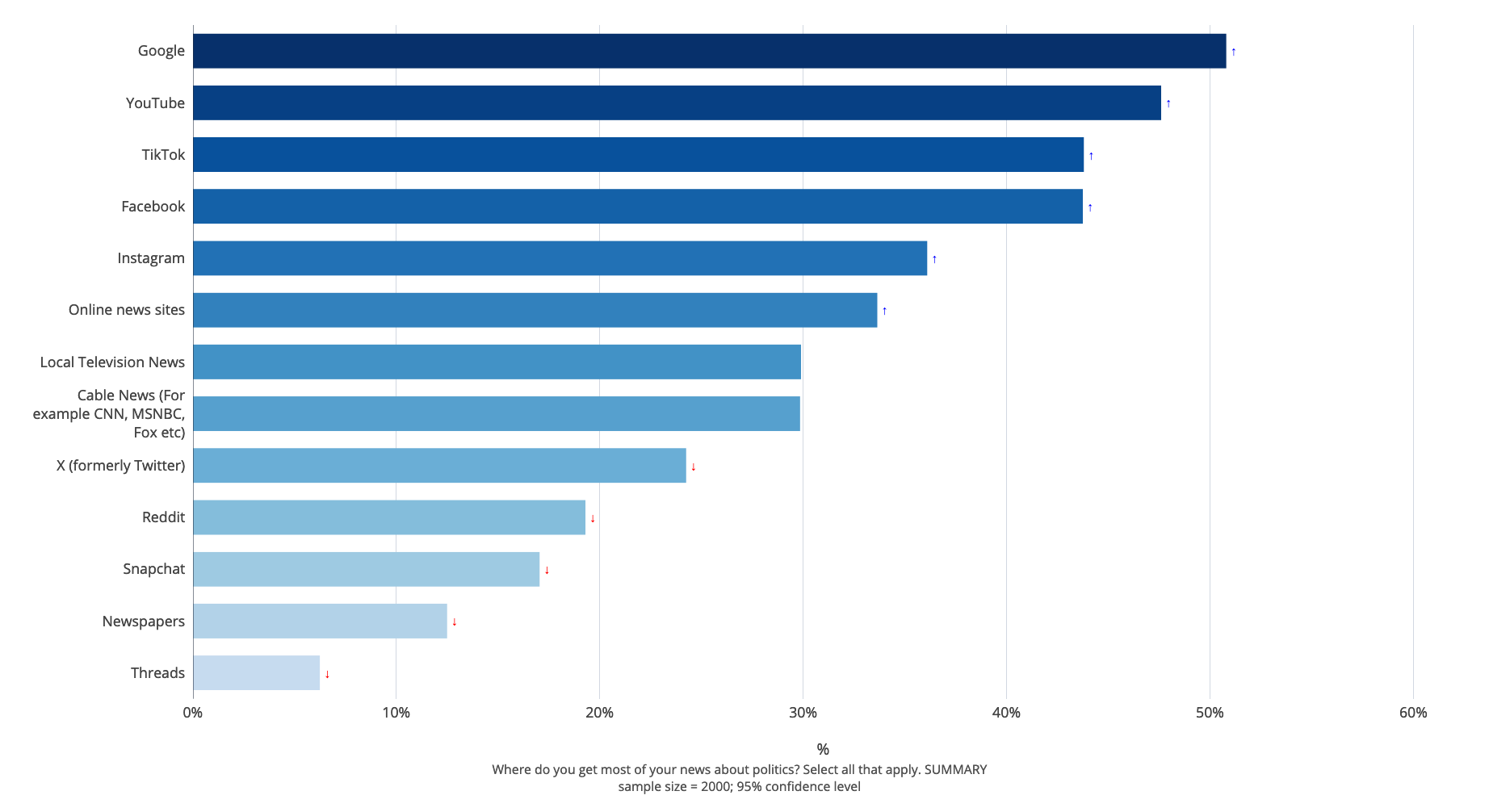
The big platforms--Google, YouTube, Facebook and Instagram--continue to dominate along with TikTok. There are, however, some partisan differences in where young Americans report getting the majority of their political news. Those who identify as Republican and more likely to get their political news on Facebook, followed by those who identify as independent. Those who identify as independent and Republican are notably less likely to get their political news on TikTok than those who identify as Democrats.
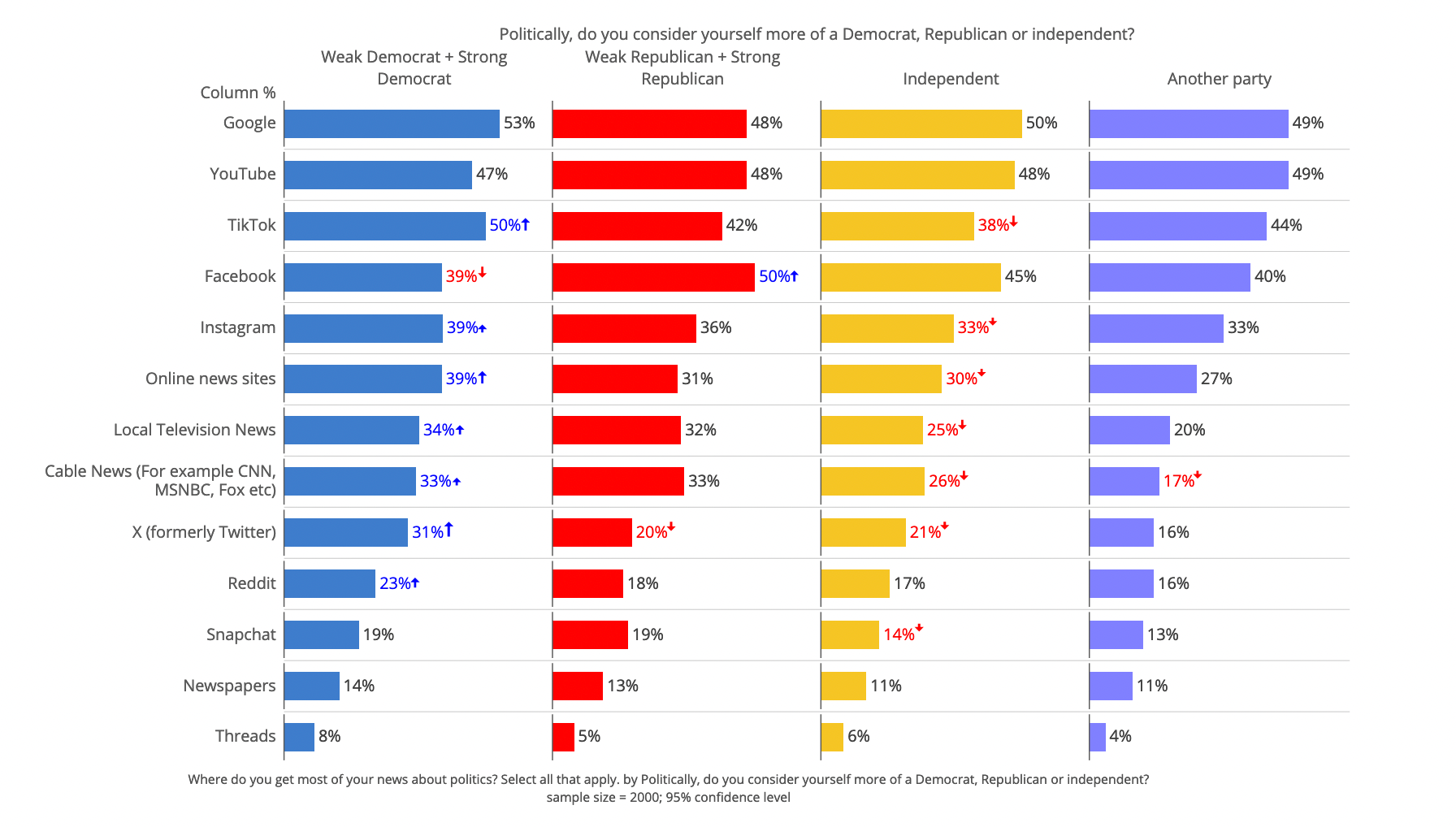
Publitics Chief Strategies Eisha Misra talks information overload.
Young Americans do not have high trust in the news they consume.
Just 13% of young Americans say they trust the political news they see, while most report feeling having "some" or "a little" trust. There are significant partisan differences, with those who identify as Democrats reporting generally higher trust than those who identify as Republican, independent or something else.
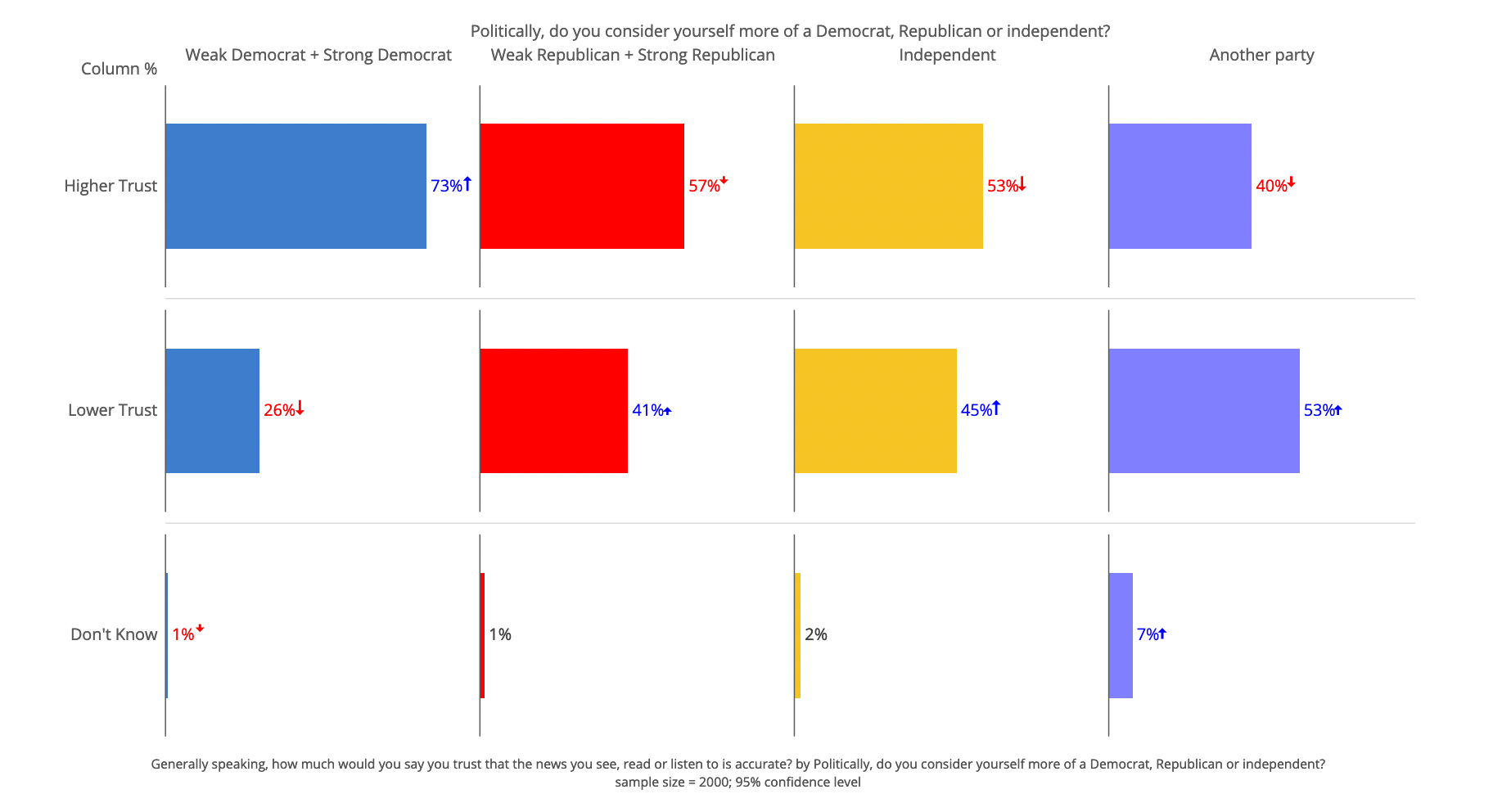
- Yes, reaching younger voters will be a challenge. The media landscape is even more fragmented than it was in 2020. Combined with disengagement from politics among a large swath of younger Americans, grabbing attention will continue to be at a much bigger premium. Campaigns have to develop strategies that meet the cultural moment in authentic ways.
- The right message matters, but so do messengers. Trust in political information is generally higher among 18-35 year-olds who identify as Democrats, but is markedly lower in those who identify as independent or as another party (over a third of our sample). Credible messengers are crucial in delivering the right messages authentically.
- Building on the above point, non-political content can be a foot in the door with younger voters. Food and comedy content top the list of what younger Americans are consuming online. Campaigns won't be able to shoehorn inauthentic messaging into these spaces online, but they can take some risks and lean into more creative approaches.
